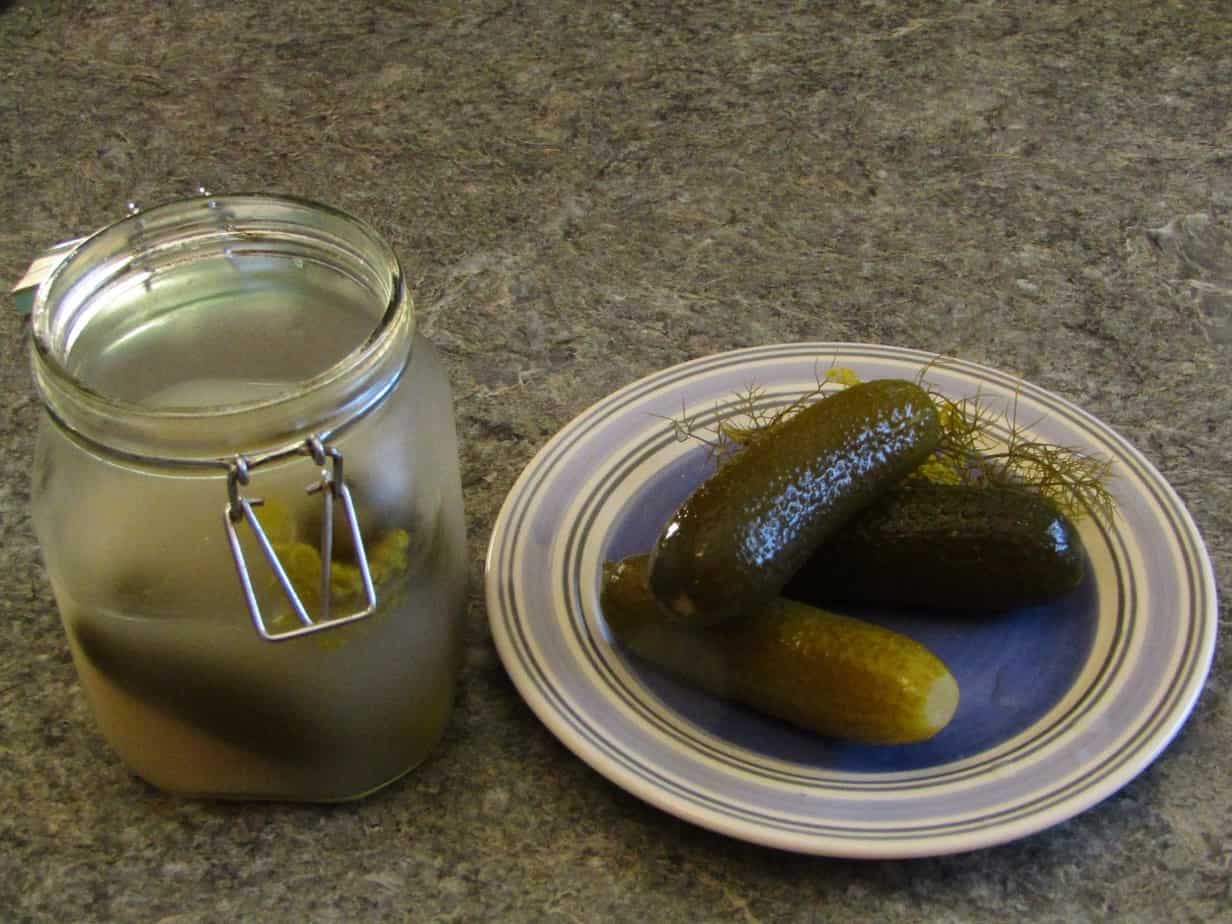This post contains affiliate links.
There is nothing like biting into a nice cool crunchy fermented pickle. The flavor just explodes in the mouth as the lactic acid, salt and umami spreads throughout the mouth. Pickles are known for their firm texture and sharp taste so why do so many pickle makers have trouble making them?
Pickles become mushy when the microbiota in the culture is allowed to occur unchecked within the cucumber. To prevent this, ferment in anaerobic conditions, use a 5-10% salt brine, keep the temperature cool, add some tannin, prick the skin, use firm cucumbers and remove the blossom end.
Understanding is the key to making firm crispy pickles. There are several factors which need to be considered in order to make good quality pickles. When all these factors are stacked in your favor you will end up with a great pickle every time.
Ferment in anaerobic conditions
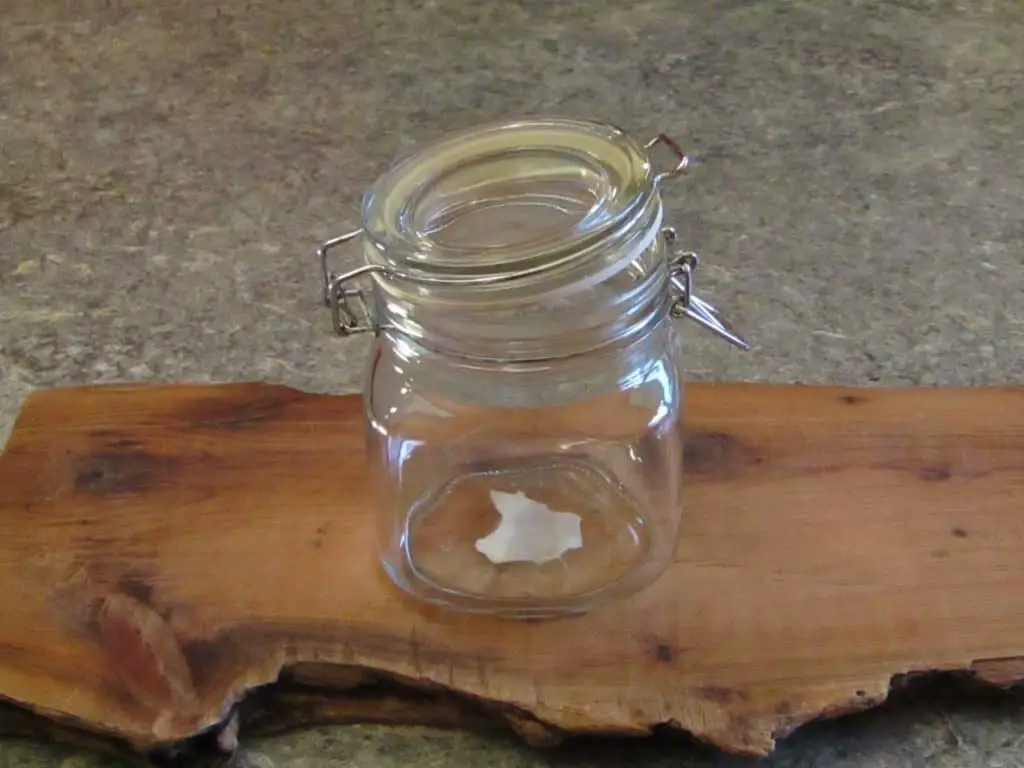
Molds love oxygen rich environments with lots of digestable carbohydrates. They break down these long-chain carbohydrates which make up the structure of the pickle. As the mold starts to grow on the surface of the cucumber it produces enzymes which digest the starch in the pickle which the lactic acid bacteria cannot break down.
Once the starch has been broken down the bacteria and yeast can digest the resulting sugar which produces higher microbiotic action further softening the cucumber.
In an aerobic environment acetic acid bacteria also grow well. Acetic acid uses alcohol as fuel which the yeast found on the cucumber produces. This symbiotic relationship works well when producing vinegar or kombucha but in pickle production it is detrimental.
The action of the lactic acid consumes the alcohol produced by the yeasts encouraging the yeasts to continue to grow. The longer this cycle goes on the softer the pickle.
Use a 5-10% salt brine
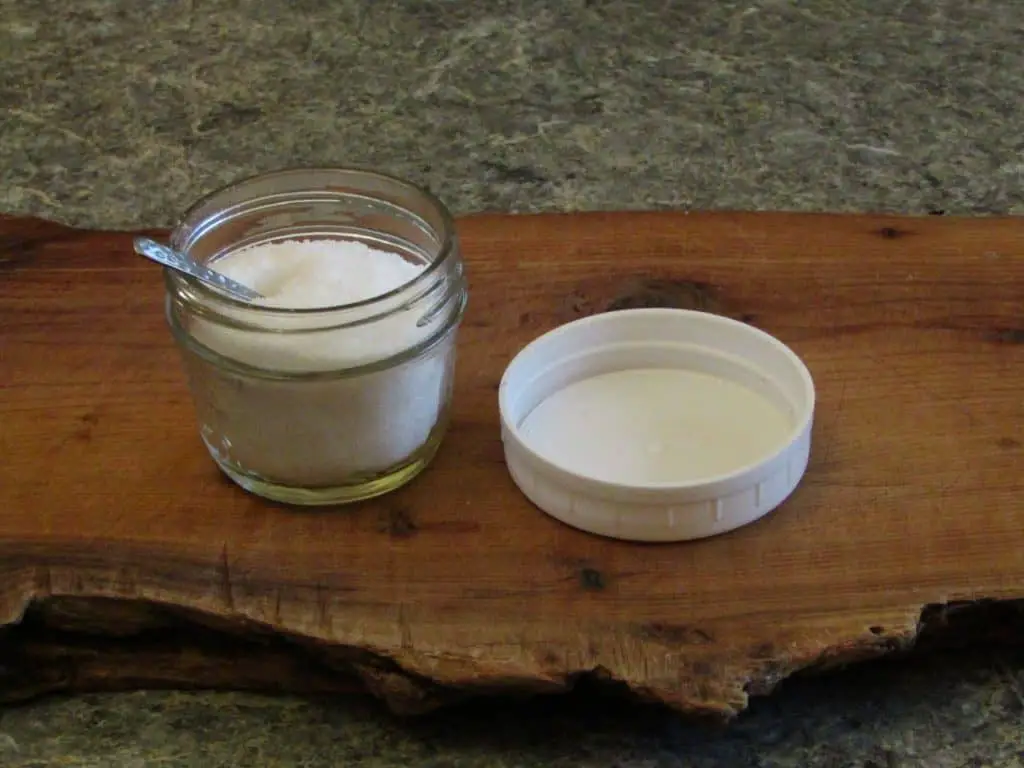
Commercial pickles are fermented in a high salt brine between 10-18%. As the salt draws out the water from the cucumbers this salt concentration drops but it is important for commercial operations to try to maintain a salt brine of 12% to prevent spoilage bacteria from growing in the large vats.
There are two reasons why you want to use a high salt concentration
Salt draws out water from the cucumber
The high concentration of salt acts as a liquid dehydrator. The water in the cucumber which is low in sodium is pulled into the brine to equalize the pressure. This has two effects:
- It makes the cucumber firmer due to less water concentration
- With the water some of the fermentable sugar comes along with the water
With less sugar in the cucumber there is less microbial activity within the cucumber itself. Microbial activity has a softening effect on the pickle because it produces high amounts of CO2 gas (the source of carbonation in kombucha soda, or sparkling wine).
The problem with CO2 within the cucumber is the damage it causes the structure of the pickle. As the CO2 is produced it expands within the pickle and damages the supporting structure of the cucumber.
Salt prevents softening bacterial growth
Salt inhibits the growth of yeast and mold which are the main softening and spoilage microorganisms found in a pickle fermentation. By inhibiting their growth the lactic acid bacteria has a chance to dominate the culture and properly acidify the pickles.
There are two types of lactic acid bacteria:
Homo-fermentative – lactic acid bacteria which does not produce any CO2
Hetro-fermentative – lactic acid bacteria which produces CO2
Since all yeast species produce damaging CO2 you want to reduce their population as much as possible and promote lactic acid bacteria which produces less CO2.
Control the fermentation temperature
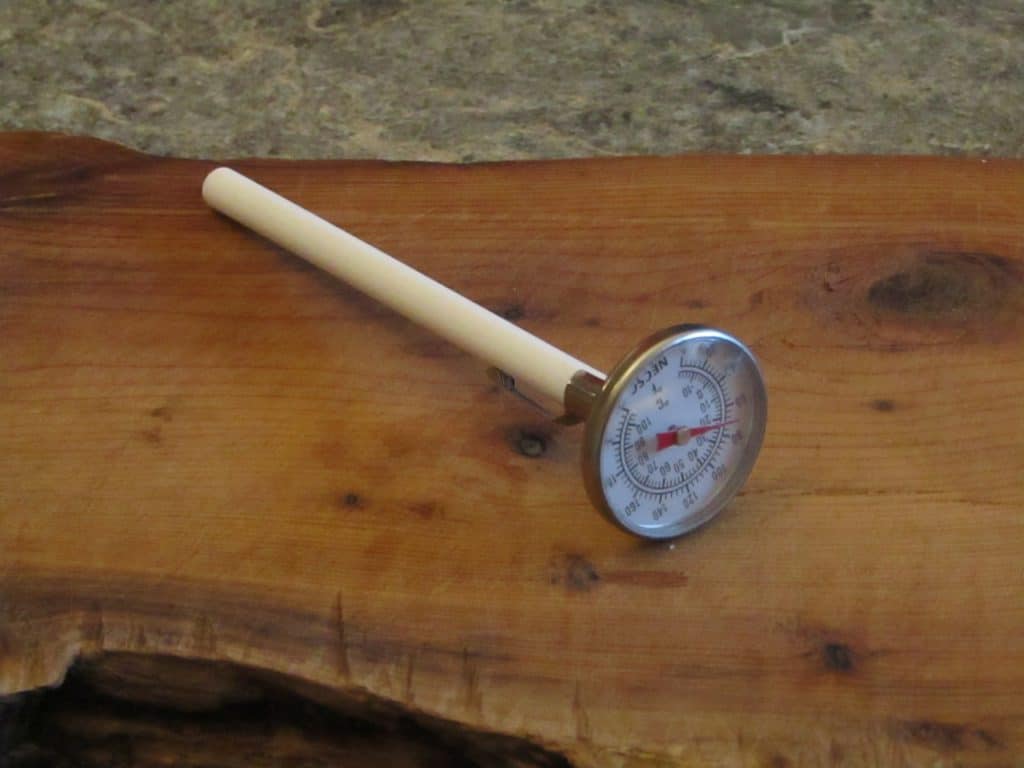
Just like fermenting cabbage in warm temperatures produces soft mushy sauerkraut fermenting cucumbers in warm temperatures produces mushy pickles. Warm temperatures encourage the growth of microorganisms.
- The rate of CO2 production goes up
As the rate of CO2 production goes up the damage it produces within the cucumber increases. A slow fermentation allows the gas to escape the cucumber without doing too much damage to the pickles structure.
- It gives the solution time to equalize
Time is necessary for the sugar to be removed by osmosis as the salt draws out some of the water from the cucumber.
- Unwanted microbial growth
Yeast and mold grow well in higher temperatures giving them the upper hand at the beginning stages of fermentation. Once they have a foothold they will continue to dominate the culture breaking down the structure of the cucumber and producing off flavors.
Use some type of tannin
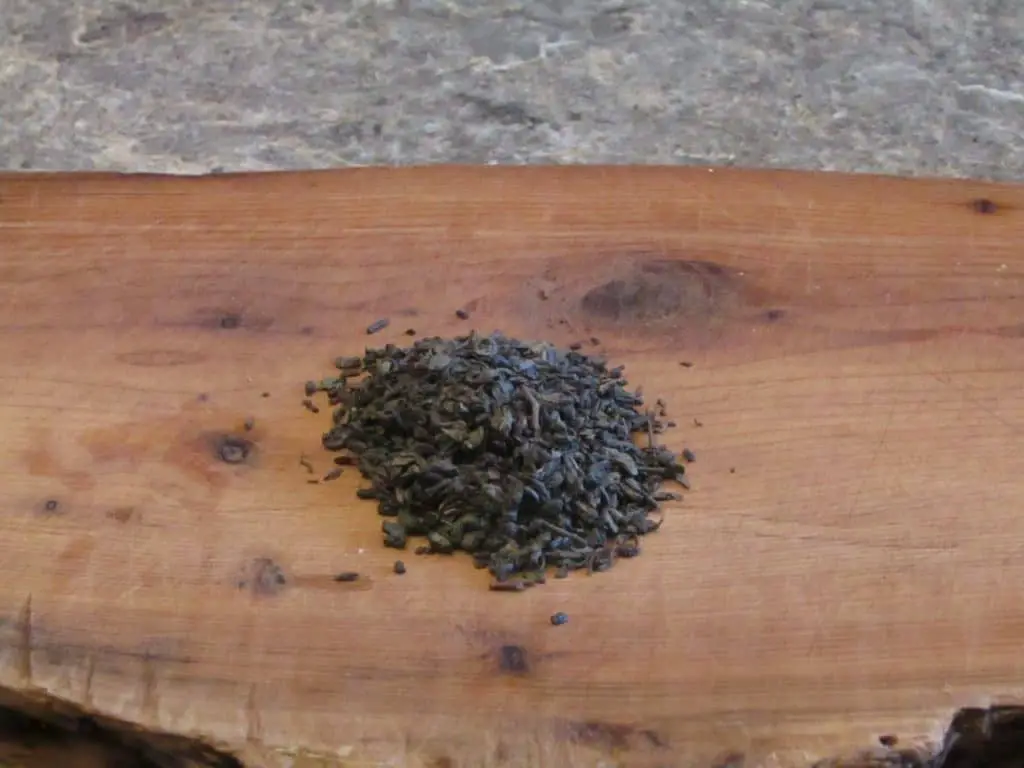
This is done by the addition of an oak leaf, grape leaf, or tea. Any leaf which is known for its high tannin content can be used but remember that the flavor of the leaf will be imparted into the pickles.
Why this works
Proteins makeup a large part of the structure of a cucumber and without them the pickle becomes soft and mushy. When tannins are added to the pickle jar they protect the proteins from damage by microbial action in two ways.
React with the proteins themselves
The tannins react with the proteins making them more difficult to digest. The addition of tannin to the pickle jar protects the proteins which makeup some of the structure of the cucumber.
Reduces the amount of active enzymes
Tannins also react with some of the enzymes produced by the proteins found in the cucumber. These enzymes help to digest the proteins and are used by microorganisms in their metabolism of protein.
With less enzymes more of the protein remains once fermentation is complete making for a firmer pickle.
Puncture the cucumbers skin several times
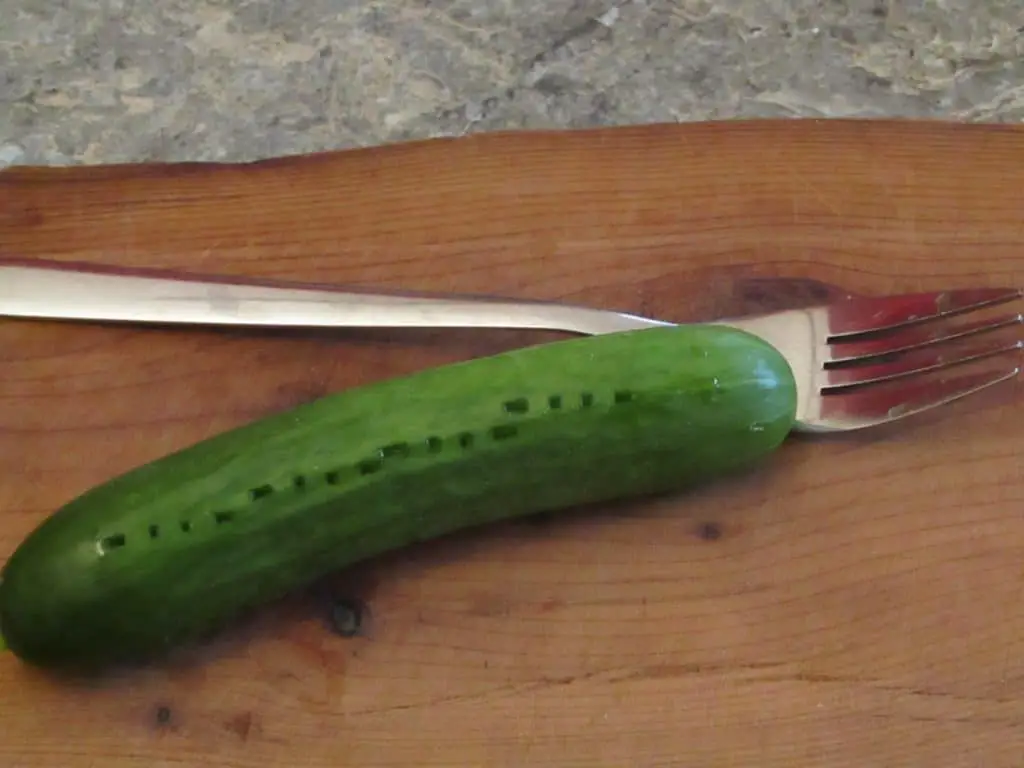
This helps the salt to draw out the sugar and water from the cucumber. The holes in the skin of the cucumber act as little doorways for the water and sugar to go through.
Water is a smaller molecule than sugar which makes it easier for it to escape the cucumber so if the water is removed without some of the sugar the sugar concentration in the cucumber goes up causing the microorganisms to grow rapidly.
This breaks down the structure of the cucumber which leads to soft pickles. The larger holes allow more of the sugar to escape which ferments outside of the cucumber producing the needed lactic acid in the brine which protects the pickles.
Start with young cucumbers
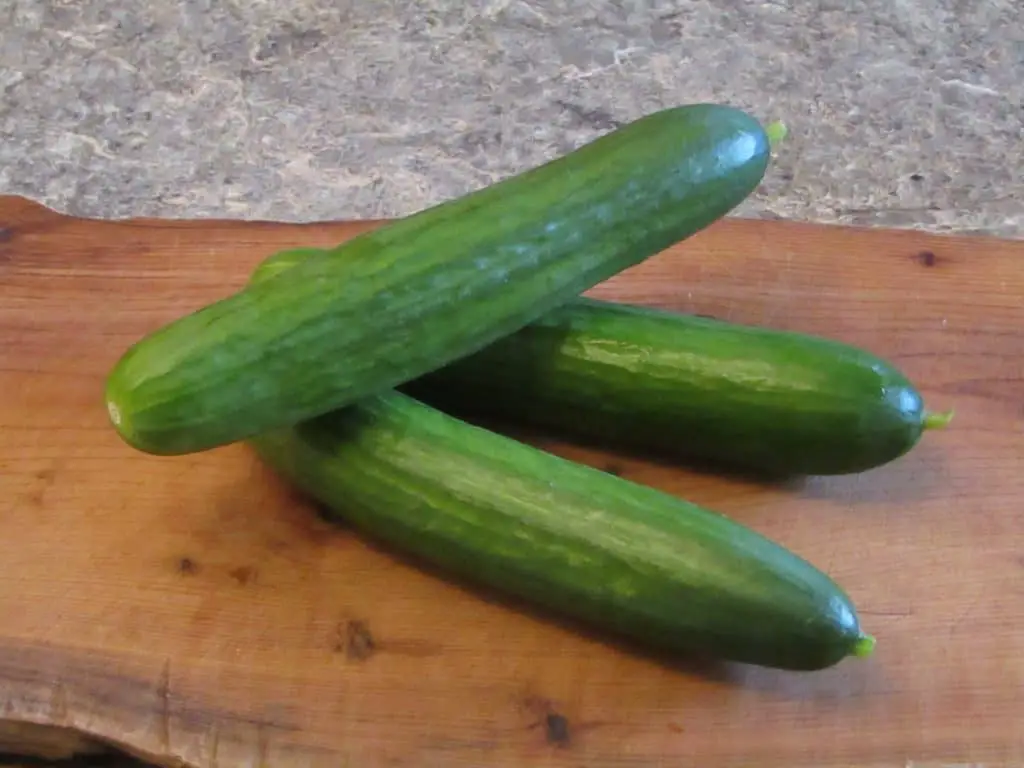
Cucumbers are considered a vegetable in the kitchen but are actually in the fruit family. They have their seeds for the next generation held in the cucumber and as a result rely on the same seed dispersion system that many other fruits have. The fruit which once it is ripe is eaten by animals and the seeds are spread around the area where they sprout the next year.
What does this have to do with pickles, well young cucumbers are unripe and still contain large amounts of long chain carbohydrates which form the structure of the cucumber. These carbohydrates cannot be used by the lactic acid bacteria as fuel and remain untouched by microbial action, leading to a firmer crunchy pickle.
As the cucumber ripens the long chain carbohydrates breakdown into smaller molecules producing more sugar. These ripe cucumbers make poor pickles because of the lack of structure within the cucumber.
Remove the blossom end of the cucumber
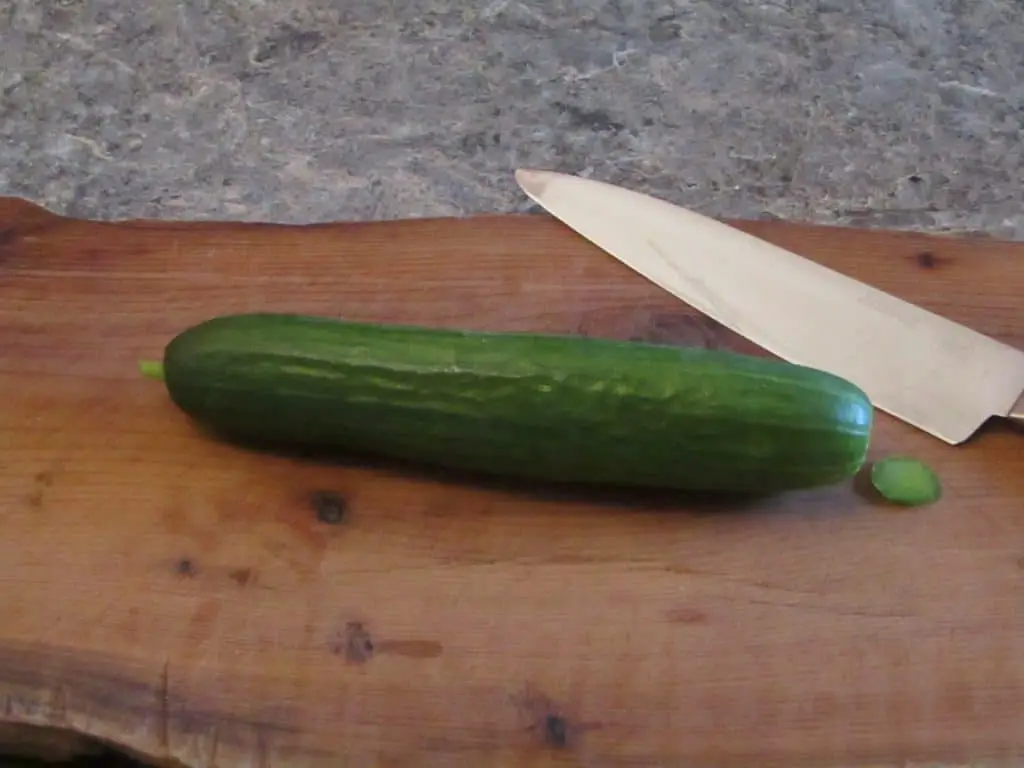
This may seem like an old wives tale but there is truth to it. The blossom end of the cucumber is a path into the fruit which can be used by a variety of spoilage microorganisms. Yeast species are the most prevalent in the blossom end and as the fruit ripens the population of the yeast increases substantially.
By removing the blossom end of the cucumber you are cutting off and discarding some of the yeasts which can enter the cucumber while it is being pickled. Without this yeast the cucumber remains firmer and the end product is a crispy pickle.

